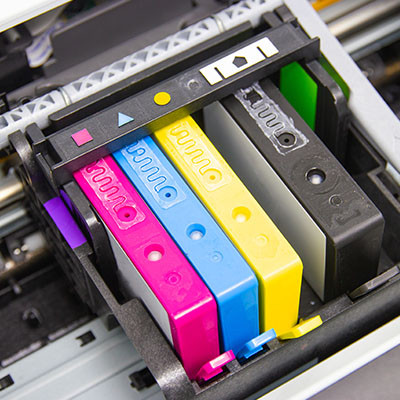ImageSys LLC Blog
Whether you like it or not, 2025 could be a rough year, and not for the reasons you suspect. Businesses like yours might have a hard time with hardware acquisition, among other issues forecast by industry professionals. Today, we want to address some of the most significant issues on every industry insider’s mind.
Have you looked at the forecast lately? Not the weather forecast… the market forecast. You know, the one that shows that proposed tariffs could impact the market—including hardware costs—as early as February 2025.
You know what that means: it’s time to upgrade or purchase new hardware today before the price hikes make it impossible.
Have you ever noticed how expensive tech stuff can get? Well, businesses feel the same way, especially when prices are going up fast. That’s why many companies are turning to the cloud. It’s like a virtual space where they can store and run everything they need—without buying a bunch of pricy equipment. Let’s see how SMBs can use the cloud to save money.
Some businesses feel pressure to get the newest, most advanced technology. It sounds like a great idea, but just because a tool is available doesn’t mean it’s the right choice for your business right now. Here are some smart strategies to help make sure your business gets a good return on any tech investments.
In a recent global law enforcement operation, authorities dismantled a colossal botnet that had been operating for nearly a decade. The U.S. Justice Department has accused YunHe Wang, a 35-year-old from the People’s Republic of China, of creating and spreading malware that infected millions of Windows computers worldwide. This malware formed a vast botnet known as 911 S5. Wang allegedly sold access to the compromised IP addresses to other cybercriminals, amassing millions of dollars.
What’s the difference between a power strip and a surge protector? It turns out, quite a lot, and the difference is much more than just the number of plugs on it. Let’s discuss some of the biggest ways that these two important pieces of power supply technology differ and how you should determine which one best suits your needs.
Networking in your office, i.e. running cables around your workplace to ensure that all devices are connected to the in-house computing infrastructure, is made somewhat easier thanks to remote work. However, you should still approach cabling in an effective way, especially if you have a lot of devices that need to be managed.
Many years ago, the practice of repairing office equipment or household appliances that malfunctioned was a common and practical solution. However, over time, changes in business practices have largely eliminated this option. In recent years, the Right to Repair movement has emerged as a legitimate campaign aimed at advocating for legal protections to safeguard the rights of the modern tech-dependent public.
Choosing what type of hardware is right for your business and when it is time to upgrade away from the hardware you use are two considerations every single business has to make. These days there are a lot of options available to decision makers that weren’t available in the past. This both makes these hardware decisions easier and more time consuming because there are more variables that people have to weigh. Let’s go through some of them today.
Thanks to our role as a managed service provider, a lot of our time is spent working with the technology commonly found in today’s workplaces. A prime example: the laptop workstation. This has given us a perspective of what laptop qualities are best for business use that you might find helpful as you’re looking to add additional devices to your inventory.
Digital storage has been evolving with the development of reliable and long-lasting devices with extremely fast storage and massive storage capacity. The innovation of the solid state drive (SSD) has changed the outlook of storage somewhat, but large-capacity SSDs can be expensive. The hard disk drive (HDD) is still a cost-effective alternative, but it is a mechanical device, which, over time, will be prone to failure.
People are constantly upgrading their technology. I mean, just take a look at how many people upgrade their phone every year even though innovation of the devices has slowed considerably. Alternatively, sometimes users ignore the signs that it is time for an upgrade even when they are crystal clear. This type of mentality will not help you, especially if your technology breaks down. You need to be able to identify when older devices are holding you back and take steps toward replacing them with better, more powerful ones.
Zero-day vulnerabilities are never fun, but this is especially the case with popular devices, like the many that use the Samsung Exynos modem. Google’s Project Zero has discovered 18 such vulnerabilities in these chips, four of which allow for remote code execution. Why should you be concerned about these vulnerabilities and what can you do to minimize your risk?
When trying to determine if a certain piece of technology should be replaced or just taken away entirely, you should first ask yourself if the technology affects your products or services in any discernible way. If the technology is something that helps with productivity and efficiency to aid in the production or delivery of said product or service, then it’s worth investing in.




















